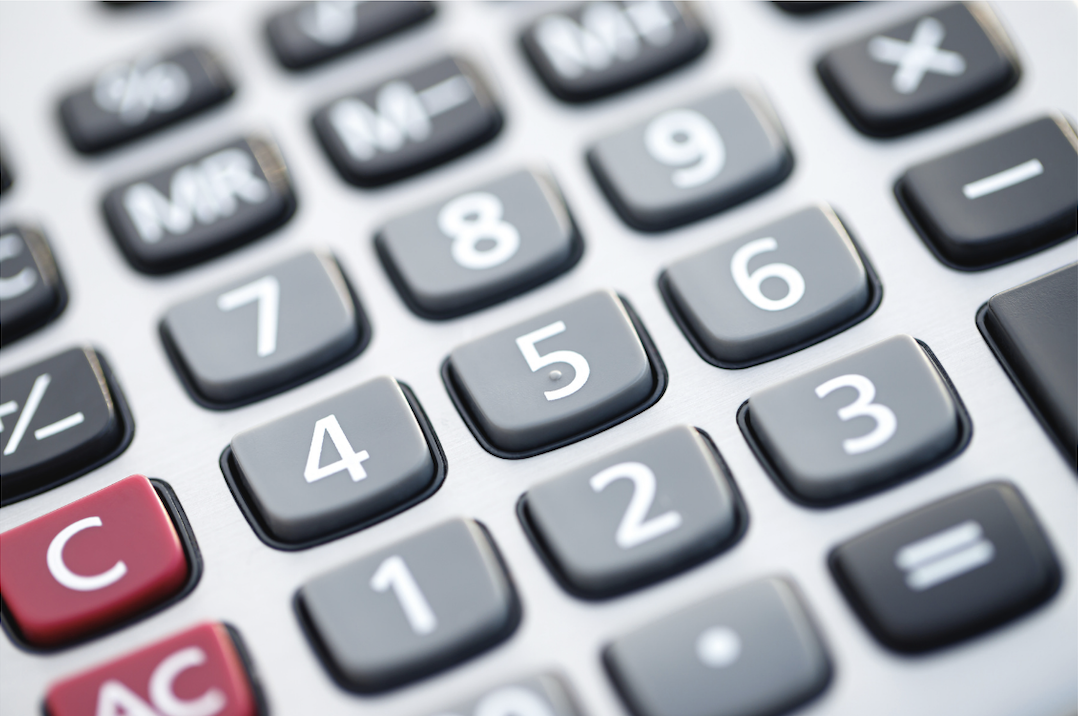IB Maths Analysis and Approaches (AA) Exam Tips

IB Maths Analysis and Approaches is a tough course. It demands not just computational skills but also deep conceptual understanding, mathematical reasoning, and the ability to apply abstract mathematical concepts to intricate problems. For these reasons, even the most analytically minded students struggle with the course at times.
The good news is, it is not impossible to get a 7 in your IB AA Maths exam. We’ve collaborated with Meera, an experienced IB examiner and Maths tutor, to provide you with comprehensive exam tips. In this blog post, Meera will share her expert insights and strategies to help you excel in the IB Maths Analysis and Approaches assessment.
Need help with IB Maths?
Maths AA HL/SL Exam Tips from an IB Examiner
Every year we see students making mistakes during their IB Maths exams. Some of them lose valuable marks because they don’t properly label their graphs, others can’t navigate the formula booklet, and many simply run out of time.
Luckily, these mistakes are easy to prevent. With the following IB Maths AA exam tips, you can maximise your chances of getting a 7 in your exam.
Know Your Analysis and Approaches Formula Booklet
The formula booklet is an excellent aid for your IB Maths Analysis and Approaches exam – but only if you know how to use it right. In other words, you need to understand every detail before exam day hits.
First things first, take some time to get familiar with the layout. The HL formulas are in a separate section, so make sure you’re looking in the right place. It might seem obvious, but in the stress of an exam, even simple things can trip you up.
It is great if you are able to learn all the formulas by heart. However, it is not necessary. Instead of spending your time memorising the formulas you will have access to, focus on understanding how and when to use them. If an equation is printed in the IB Maths AA formula booklet, just use it directly. This should save you from the fear of deriving wrong formulas from your memory.
There are, however, a few exceptions. Some formulas are crucial to memorise, such as trigonometric ratios. You need to commit those to your memory because you will need them, especially for Paper 1.
Proving Results in Your IB Maths Exam
The next IB Maths Analysis and Approaches exam tip is one that your teacher has probably been pointing out for years – how you get an answer is just as important as the answer itself – sometimes even more so!
The examiners want to see your entire thought process, not just the final number. That’s because working is evidence that you understand the mathematical reasoning. They are proof that you are able to lay a path from a problem to its solution.
You need to pay close attention to the command terms in the questions – they pinpoint how detailed your answer should be. For example, Calculate, Find, Prove, Show, and Solve indicate that you must break down every step. On the other hand, with Write down, there is no need to elaborate.
The bottom line, sometimes workings are worth more than the final answer. An incorrect answer with perfectly logical, clear working may earn you more points than a correct answer that has just appeared out of thin air.
Don’t Waste Your Reading Time!
You will have five minutes at the beginning of each part of your IB Maths exam (i.e. Paper 1, Paper 2, Paper 3) to read the questions. But be careful, because only reading is allowed (no writing, no taking notes!).
To make these five minutes count, you should scan each paper and make a mental note of topics you feel confident about. It makes sense to answer them first to build momentum. In Paper 2, for example, some of the easier marks come from graph drawing questions. At the same time, leave trickier questions for later – it might be easier to solve them when you’ve warmed up.
As you go over the questions, try to spot restricted domains, undefined values, and specific number set requirements (is the solution in N, Z, Q, or C?). There might be other important information you want to highlight, such as command terms. This will help you quickly reference key details when you start solving.
It is also useful to look at mark allocation for each question. Clearly, a 20-mark question demands far more time and detail than a 2-mark one. Therefore, you should plan more time for solving questions with high rewards. And don’t forget that such questions will require detailed workings. For 2-mark questions, a solution can be concise – 1-2 lines max.
Make it Easy for the Examiner to Award You Marks!
IB Maths examiners are human beings. It is they who have to read and check your work. Your task is to make their job as easy as possible. In other words, they need to understand what you write, what you want to achieve, how you plan to achieve it, and where to find your solutions.
For starters, give yourself plenty of room to work. Examiners need to distinguish where one question ends and another begins. Also, don’t try to cram your steps into just a couple of lines. Instead, spread them out vertically (not horizontally!) so that they can easily follow your steps. Don’t be scared to run out of space – you can always ask for additional paper.
We also recommend highlighting your final answers and key results.

As we have already said, it is a good strategic decision to start tackling easier questions first. This means you can solve them out of order. However, don’t forget to specify each question number – there will be special boxes in the answer booklet for this purpose.
If you discover a mistake, it is best not to paint over it. Instead, draw a single line through the error. This might show the examiner that you are transparent about your work. Besides, neat answer sheets, even though they have some corrections, are simply easier to read.
There might be a situation when you start solving a question multiple times. You are absolutely allowed to do so. Still, you need to decide which attempt you wish to have marked and which to cross out. Otherwise, the examiner will typically mark the first attempt. Under no circumstances should you cross off both – this will result in zero marks!
Summing up, this is what can help your examiner better understand your work and potentially reward better marks:
- Write legibly. It is hard to understand rushed, unorganised writing;
- Use a black or blue pen;
- Leave some margin space for potential examiner notes;
- If you’re using a calculator, show key calculation steps;
- Keep your work clean and structured.
Clear Graphs are Essential
When it comes to graphs, precision is your best friend. Your graphs must be not just correct but also clear and fully labelled.
For starters, you should use a sharp pencil and a ruler. Also, pay attention to the scale specified in the question since it is one of the requirements to get full marks.
When building your graphs, use a line or curve appropriate to the context of the assignment. It is critical that its shape and progression accurately represent the mathematical relationship you’re exploring.
When it comes to labelling, you need to ensure to mark axes and significant points on the curve or line (such as axial intercepts, maximums, minimums, etc.) as well as give your graph a title related to the mathematical concept or function you’re exploring.
For functions with asymptotes, always provide their equations. This will allow the examiner to see that you understand the mathematical behaviour of the function.
Don’t forget to consider the specific details requested in the question. If it asks you to highlight certain features, it is a must to do so.
Need help with this subject?
100 % of tutors are certified teachers and examiners
Use Your Graphic Calculator to Get Higher Marks
A graphic calculator is extremely useful for your IB Maths Analysis and Approaches exam, specifically for Paper 2. But like any powerful tool, you need to know how to use it effectively.
First things first, always ensure your calculator is in the correct mode. For trigonometry-related questions, it should be switched to radians. It is the right setting for arc length and sector area as well.
It is also very important to appropriately use window settings. Not all graphs are immediately visible. Therefore, you need to know how to manually adjust or use zoom functions to view the crucial graph features you might otherwise miss.
Other essential operations with your graphing calculator may include:
- Calculations of correlation coefficients;
- Simultaneous equations;
- Numerical derivative and integral;
- Polynomial roots;
- Equation solver (often it is more efficient than graphing);
- The table function for sequences and series;
- Data analysis (for example, to find mean, median, mode, standard deviation, and so on);
- Statistic calculations and hypothesis testing;
- Probability calculations.
Remember, your calculator is only a helpful tool but you still need to rely on your own judgement. For example, a question may ask for an exact answer – in this case, you can’t use a calculator’s approximate solution. It is still possible to utilise it to check your work though.
When using your graphic calculator, always show your work. The examiner needs to see evidence of your mathematical reasoning. Provide sketch graphs, table portions, or working lines that lead up to your calculator use.
Oftentimes, you will have to do algebraic calculations to obtain a single-variable equation. However, as soon as you have the necessary data, don’t hesitate to transition to calculator functions. This approach saves time and reduces computational errors.
Last but not least, you need to prepare your calculator for the exam. Fully charge it and bring spare batteries. Also, you must delete all unauthorised programs to avoid potential exam complications.
IB Maths Analysis and Approaches Exam Success
Often, students lose marks not because they don’t understand Maths but because they fail to follow the rules. Little careless mistakes such as incorrect rounding, missed labels, excessively concise workings, wrong calculator settings, or just an unorganised answer sheet can prevent you from getting the grade you hope for.
Follow these IB Maths Analysis and Approaches exam tips to maximise your marks. You can also take a look at our IB Maths revision tips, which will help you come to your exam fully prepared.

Our team will be happy to contribute to your exam success. Thanks to our talented IB Maths tutors, you can receive one-on-one support catering to your individual needs. At the same time, we offer affordable revision courses to help you structure your exam preparation. All our tutors are licensed Maths examinators meaning they know firsthand the dos and don’ts of IB Maths assessments.
If you would like to book tuition with Meera or another tutor from the TutorsPlus team, don’t hesitate to contact us at 022 731 8148 and .
Meera holds a BA in Science Education from the University of Melbourne and was both Head of Maths and Diploma Co-ordinator at the International School Hannover. Prior to this, she taught at colleges and grammar schools in Australia. She has over 30 years of experience teaching in various educational settings and specialises in IB Maths MYP and IBDP AA (HL and SL).
FAQ
How Important is Showing Work in IB Maths AA?
It is critical to show all your workings for three reasons.
First of all, most command terms in questions will require you to do that. If you fail to comply, this will signal to the examiners that you didn’t fully understand the task.
Second, even if you couldn’t find the right answer, working can still earn you some points. That’s because they show your understanding of Maths concepts.
Third, workings can help you easily find flaws in your logic when you double-check your solutions.
In any case, clearly showcasing the steps of solving a Maths problem will give you a better chance of getting the maximum.
Can I Rely on Past Paper Questions for Practice?
Yes, you can and, in fact, should use past papers for exam practice! Clearly, you can’t expect the same questions on your actual exam but their types, formulations, required formulas, and underlying concepts will be similar. That’s why you can’t do without past papers to get a sneak peek into the upcoming assessment.
Besides, it is beneficial to work with past papers because:
- Practicing under time conditions can show you how much time you need to solve Maths questions of various types;
- They can reveal your strong and weak sides;
- Past papers can give you more confidence to solve challenging Maths tasks.
What Should I Do If I Get Stuck on a Question During the Exam?
The best you can do in this situation is to move on. If you spend too much time on one of the questions, you might deprive yourself of an opportunity to solve other tasks. So, if after a couple of minutes of engaging with such a question, you have no idea how to approach it, just leave it and start working on something else. If you still have time at the end, go back to the unsolved task and try again – you might look it at from a different perspective the second time around.
How Much Time Should I Dedicate to Revision for the AA Exam?
The specific answer will depend on your current level of Maths proficiency, particular challenges you face, as well as proximity to exams.
For starters, it might be enough to revise 30-60 minutes a day. However, the closer it gets to the exam day, the more intensively you should study. During the last two pre-exam weeks, we recommend practising with past papers mimicking the actual exam conditions. This means setting a timer for 1.5 hours for Paper 1, making a short break, and attempting to answer Paper 2 for another 1,5 hours. At HL, revision with past papers should take even longer since Paper 1 and Paper 2 span two hours each, plus a one-hour-long Paper 3.















